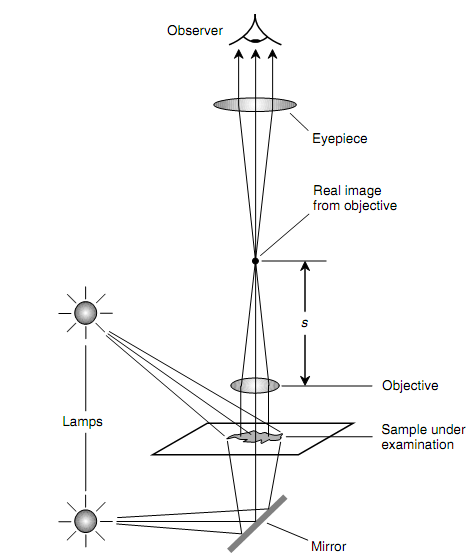Basic Principle of Compound Microscope:
The compound microscope utilizes two lenses. The objective has a small focal length, in some situations 1 mm or less, and is positioned close to the specimen or sample to be examined. This generates an image at a few distances above the objective, where the light rays come to the focus. The distance (let us call it s) among the objective and this image is all the time greater than the focal length of the objective.
The eyepiece has a large focal length than the objective. It magnifies the real image generated by the objective. In a classic microscope, illumination can be given by shining a light upward via the sample when the sample is translucent. Several microscopes permit for light to be shown downward on opaque specimens. Figure below is a simplified diagram of a compound microscope illustrating how the light rays are focused and how the specimen can be enlightened.

Figure: Illumination and focusing in a compound optical microscope.
The Laboratory-grade compound microscopes contain two or more objectives, that can be selected by rotating a wheel to which each objective is attach. This gives numerous different levels of magnification for a given eyepiece. In common, since the focal length of the objective becomes short, the magnification of the microscope rises. Some of the compound microscopes can magnify images up to around 2,500 times. The hobby-grade compound microscope can give decent image quality at magnifications of up to around 1,000 times.